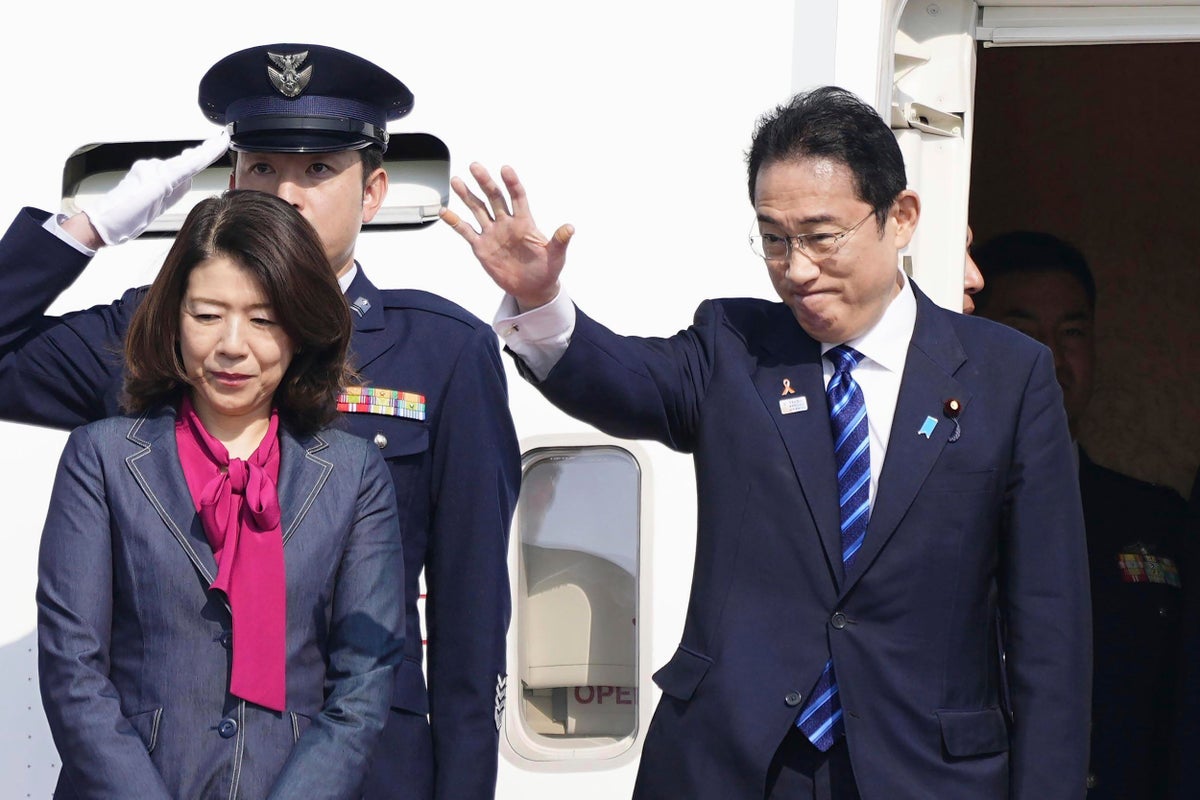
Japan’s prime minister began a two-day visit on Friday to the Philippines, where he’s expected to announce a security aid package and upcoming negotiations for a defense pact in a bid to boost Tokyo’s alliances in the face of China’s alarming assertiveness in the region.
After a red-carpet welcome at the Malacanang Palace in Manila, President Ferdinand Marcos Jr. was set to hold talks with Japanese Prime Minister Fumio Kishida on bolstering overall relations, primarily defense ties. China’s increasingly aggressive actions in the South China Sea will be high in the agenda, Philippine officials said.
Two weeks ago, China’s ships separately blocked then hit a Philippine coast guard vessel and a supply boat near the disputed Second Thomas Shoal in the South China Sea. Japan immediately expressed its strong support to the Philippines and the United States renewed its warning that it’s obligated to defend its treaty ally if Filipino forces come under an armed attack in the contested waters.
On Saturday, Kishida will become the first Japanese premier to address a joint session of the Philippine congress, underlining how the Asian nations' ties have transformed since Japan’s brutal occupation of the Philippines in World War II.
Kishida said in a departure speech in Japan that he would outline Japan’s diplomatic policy for Southeast Asian countries, including the Philippines.
"I hope to confirm our pursuit toward a world where the free and open international order based on the rule of law is maintained and human dignity is protected,” he said.
He's scheduled to visit a Japanese-funded Manila subway project Saturday and board one of a dozen Japanese-built coast guard patrol ships, which the Philippines now largely uses to defend its territorial interests in the South China Sea, before leaving for Malaysia.
"We look forward to the address of a leader of a nation that is a robust trading partner, a strong security ally, a lending hand during calamities and an investor in Philippine progress,” Senate President Juan Miguel Zubiri said.
Kishida's government unveiled plans in December to build up its security and defense — including counterstrike capability — in a major shift from the country’s self-defense-only principle adopted after the last world war.
Under the new strategy, Japan will utilize its huge development aid to support efforts by poorer nations like the Philippines to strengthen their security capabilities and improve safety at sea as China flexes its military muscle in the region.
Kishida also aims to foster three-way security ties involving his country, the United States and the Philippines, Japanese officials said.
Those objectives dovetail with Marcos Jr.'s thrust to strengthen his country’s external defense after a series of tense confrontations between Chinese and Philippine coast guard and naval ships in the disputed South China Sea.
President Joe Biden has also been strengthening an arc of alliances in the region to better counter China’s assertiveness.
A highlight of Kishida’s visit would be the launch of a Japanese security assistance for friendly militaries in the region — with the Philippines as the first recipient, a Japanese official said without elaborating ahead of Kishida’s visit to Manila. The official spoke at a briefing on condition of anonymity set by the foreign ministry. The new security aid would likely be used to provide Japanese-made non-lethal equipment like radars, antennas, small patrol boats or infrastructure improvements, rather than advanced weapons.
Kishida and Marcos are also expected to announce an agreement to start negotiations for a defense pact called Reciprocal Access Agreement, the Japanese official said.
Such a defense agreement would allow Japanese and Philippine troop deployments to one another for military exercises and other security activities that could serve as a deterrent to aggression in the region, including joint patrols in the South China Sea.







